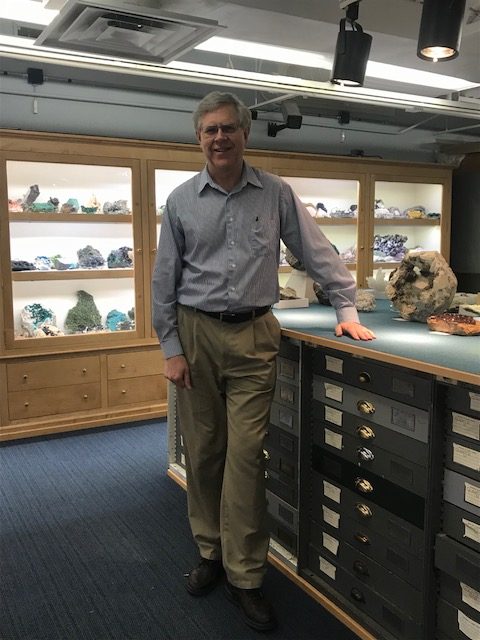The hidden gem of geology
WASHINGTON—On the surface of the Smithsonian National Museum of Natural History’s Hall of Geology, Gems and Minerals, you’ll see the world-famous Hope Diamond and eye-catching gems such as emeralds. But if you delve deeper into the museum, you’ll find the office and workroom of Mr. Jeffrey Post, one of the people behind the creation of the gem displays and the curator in charge of the national gem and mineral collection at the Smithsonian.
Post has been working at the museum for 34 years, but he’s been looking at rocks ever since he was a kid. Part of what got him interested in geology was seeing crystals like Keralite, an ore that forms in the shape of mini octahedrons.
According to Post, one of the best things about his job is the variety, adding: “There’s no typical day, but usually it’s some combination of research, working with collections and the public. I learn something new every day and that’s one of the best parts of being here.”
For Post and those involved in geology, the world is their laboratory and that shows in his travels.
Post travels about once a month for different reasons. Recently, he went to New Orleans to give a talk, and in February, he went to Tucson, AZ, for a mineral show. He’s also traveled to Sri Lanka to visit a mine and occasionally he’ll be called out to look at a gem or mineral. He might even teach geology in China for a week or two.
Despite studying thousands of rocks, Post will always have a favorite from his teens: “There’s one specimen that’s on exhibit that I saw when I visited as a high school student; it’s called millerite. It’s a spray of crystals. They’re a bright kind of brassy yellow or gold crystals. I remember being really impressed with it when I first came here, long before I ever imagined working here, so it’s always going to remain one of my favorites.”
Geology is constantly evolving. Post mentioned that when he was an undergraduate, geology and biology majors never talked to each other: “We had our own volleyball team and clubs. Now, the realization is that on the surface of the Earth you’ve got all these living things and then you’ve got rocks, so you have geology and then you have biology, but they interact with each other. The sciences have become much more interdisciplinary and it’s something that certainly has changed within my lifetime.”
On the surface of the geology field, there’s rocks and gems. But dig deeper, and you’ll find an understanding as to what rocks and minerals can tell us about the past, present and future of our planet and solar system.

